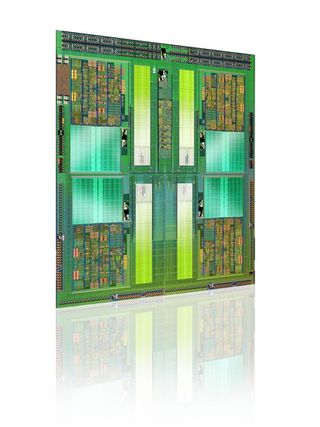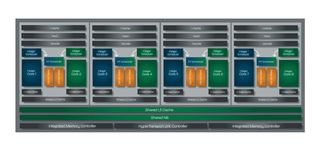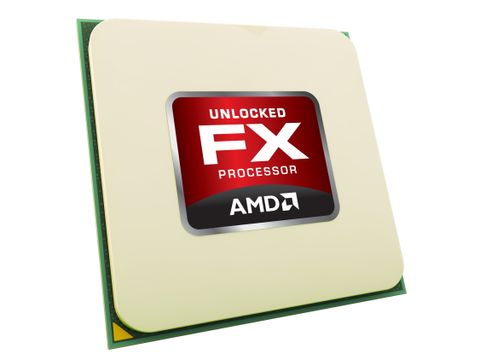Why you can trust TechRadar

The AMD FX-8150's new Bulldozer technology is a fairly radical departure from the standard model of processor design.
The big news is the modular design housing the constituent components of a dual-core CPU in one.
It's also AMD's first 32nm desktop CPU. Sadly that does make the chip seem a little behind the times with Intel set to release it's first 22nm processor in Spring next year.
But like Intel's shift in process size the change to this modular design allows the AMD engineers to squeeze more performance into a smaller space, and therefore also cut the costs of manufacturing.
Essentially the idea is to share parts of the module with lower utilisation, such as the Level 2 cache, Fetch and Decode components, while high utilisation parts, such as the Integer pipelines and Level 1 data cache, are separated out per core.
According to AMD that should give each Bulldozer module around 80% of the performance of a standard dual-core CPU.
It's this squeezing of two cores into each module that means AMD can produce an eight-core CPU for less than the price of Intel's top Sandy Bridge quad-core.

And seeing as competition on price rather than performance is more of AMD's concern than Intel's that's something it had to do with the AMD FX CPUs.
Still, like the AMD FX-8150 the Core i7 2600K - that top Sandy Bridge chip - can run eight processes in parallel.
Intel doesn't call it an eight-core chip, instead uses its HyperThreading technology to split the four cores in its die into eight processes. There is a certain amount of hardware in the Sandy Bridge die to make the HyperThreading magic happen, but mostly it's a software-oriented model.
Intel's way of spreading out four cores into eight processing threads operates mainly by effectively managing instructions going into one core and separating that out into two parallel threads for the operating system.
Turbo
Again like the Intel chips, the AMD FX CPUs use a form of on-the-fly overclocking to boost performance when there's spare capacity available.
The AMD Turbo Core technology has been used in the Phenom II CPUs before, but has been specifically enhanced for the Bulldozer architecture. Now it can use the Turbo Core to offer increased performance when all cores are active should the TDP headroom exist for it to do so.
The AMD FX-8150 has a standard clockspeed of 3.6GHz, with a possible Turbo Core available to it to allow it push up to around 3.9GHz.
When only a single core is needed though then Max Turbo comes into play.
This essentially takes the available TDP headroom for the entire chip and focuses it onto a single core giving it the ability to push even further in terms of clockspeed.
On the AMD FX-8150 that means it's theoretically possible for the chip to hit 4.2GHz as standard when only one thread is needed.

But what about the platform?
Despite the delay to the actual CPUs themselves the motherboard platform was actually launched a fair while back. The AMD 9-series motherboards have been doing a roaring trade out there even without the chip to back them up.
There's precious little difference between the 8-series and 9-series motherboards save for one vital ingredient; the AM3+ socket that supports the new AMD FX CPUs. That also means they aren't the priciest boards in existence.
Still, to get the best out of your Bully CPU, at least in overclocking terms, then dropping some cash on a decent board should be well worth the money.
To this end AMD is shipping out the Asus RoG Crosshair V Formula with each review kit.
That's a brief overview of the technologies behind AMD's latest chip architecture, and mighty impressive it looks on paper. But how does it perform in the real-world? Overclocking records aside, what will happen when you drop this chip into your motherboard at home?
Let's take a look.
Current page: AMD FX-8150 - Architecture
Prev Page AMD FX-8150 - Overview Next Page AMD FX-8150 - Benchmarks
How to watch Liège-Bastogne-Liège 2024: live stream men's cycling online from anywhere

A key Apple app is rumored to be getting a major upgrade in macOS 15

Intel's formidable 288 core CPU now has a proper family name — Granite Rapids and Sierra Forest are Xeon 6 processors but is it just becoming too confusing?
